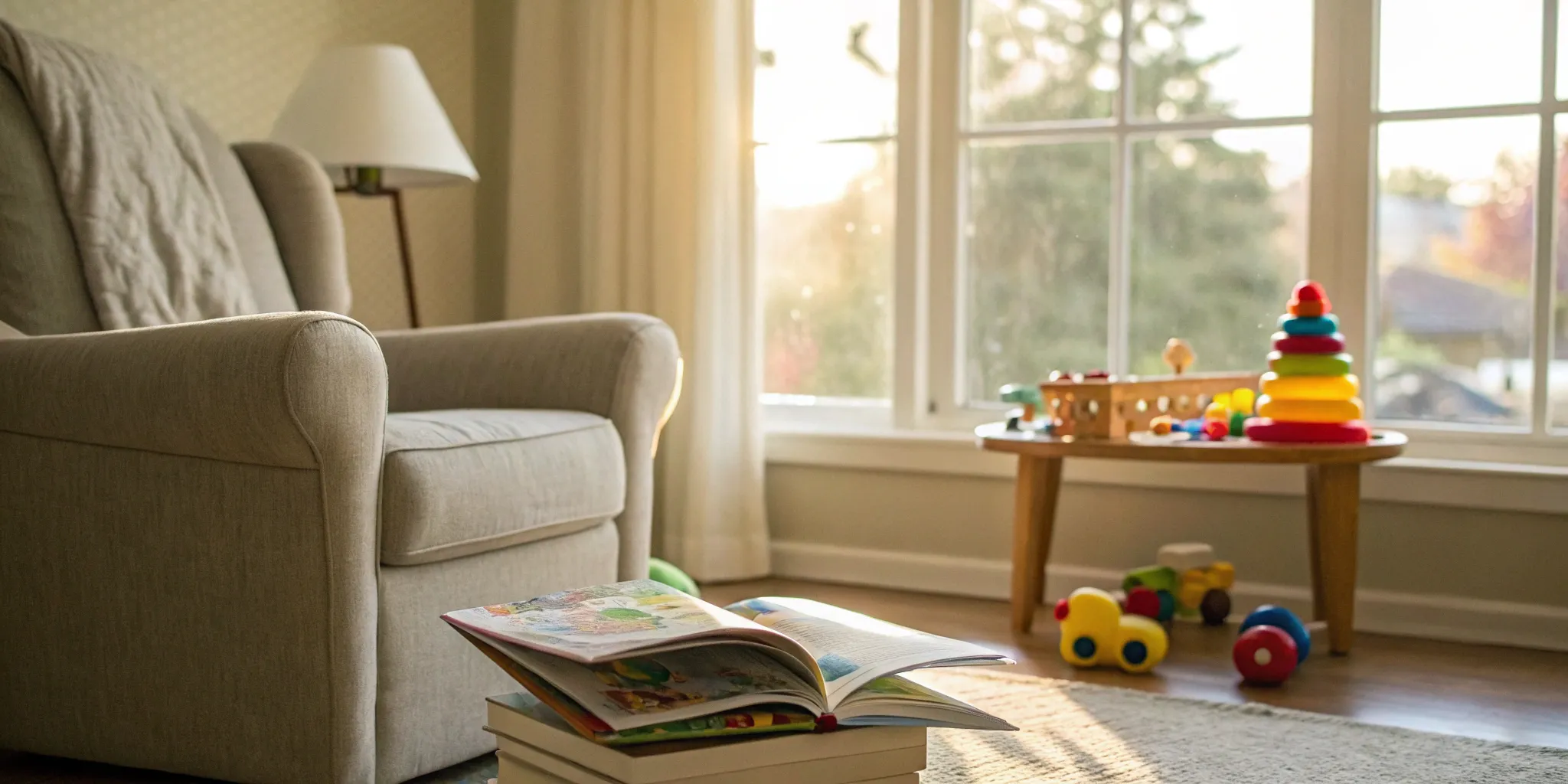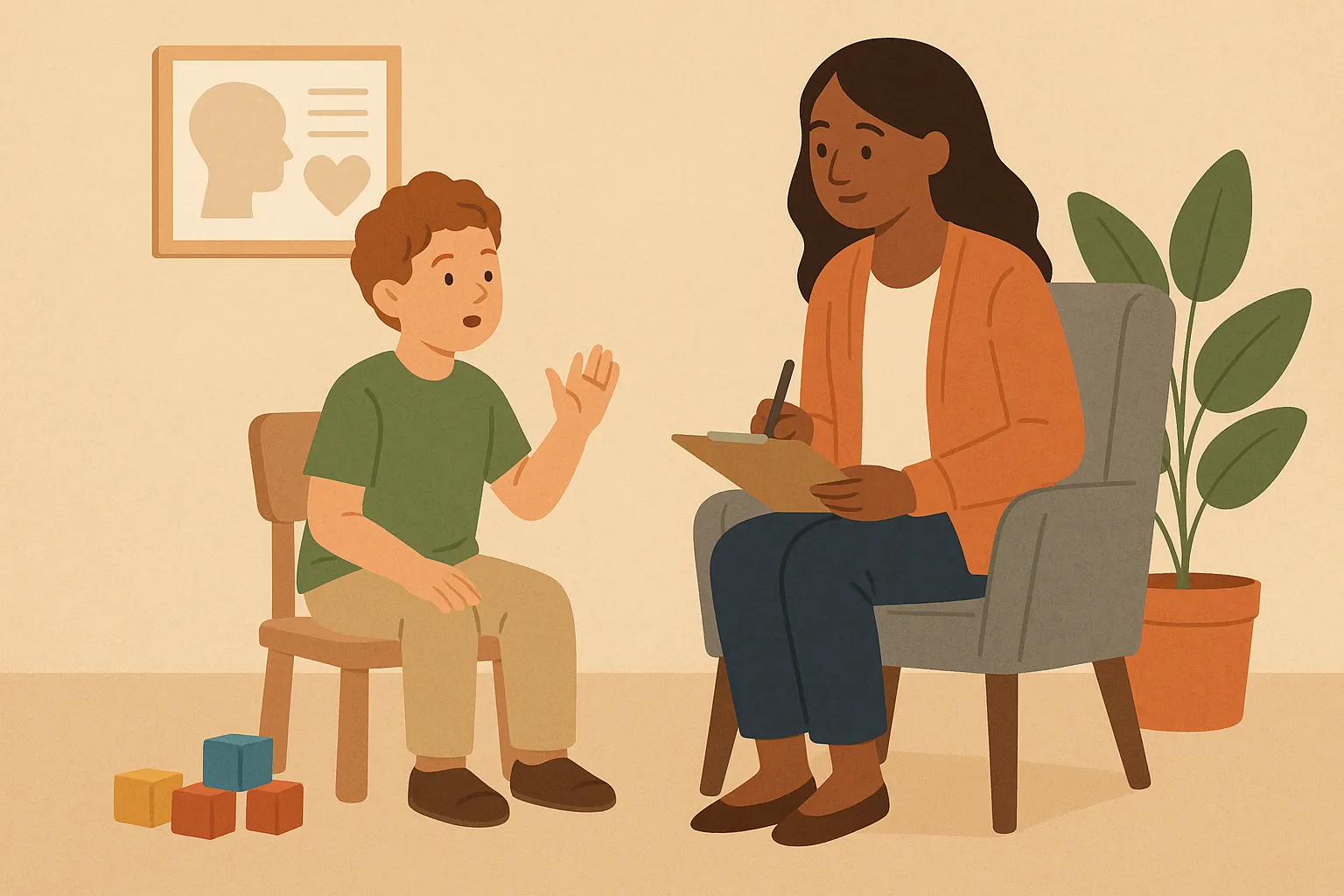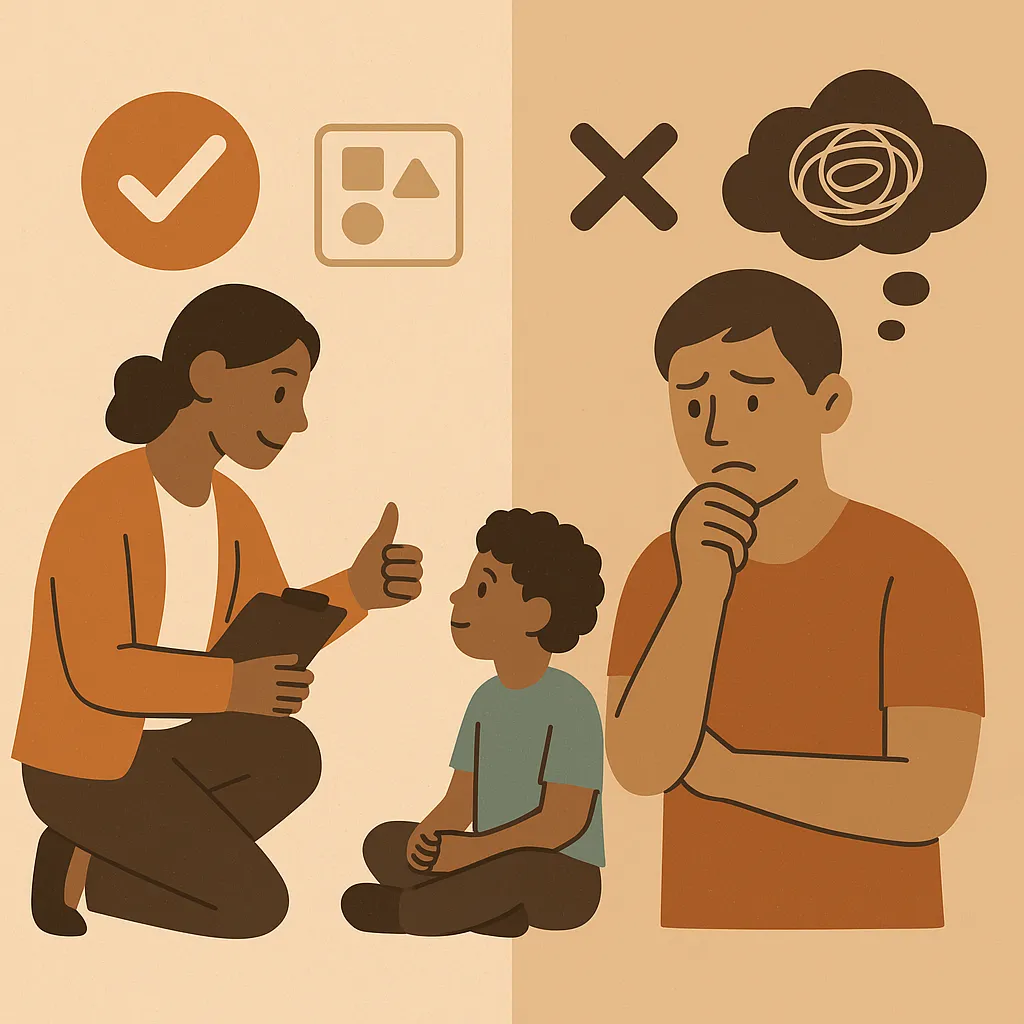ABA Therapy Activities PDF Free Download: Parent's Kit

One of the keys to successful ABA therapy is keeping your child engaged and motivated. When learning feels like a fun game instead of a chore, children are more likely to participate and retain new skills. But constantly coming up with new, creative ideas can be exhausting. Having a collection of ready-to-go activities can be a lifesaver, helping you mix things up and keep sessions fresh. This guide is designed to be your source of inspiration. We’ve compiled a list of our favorite resources that are both fun and grounded in evidence-based practices. You can start building your library today with our exclusive aba therapy activities pdf free download, full of engaging printables your child will love.
Key Takeaways
- Start with Proven, Free Resources: Supplement professional therapy by downloading free, evidence-based activities like visual schedules and communication cards to create a supportive learning environment at home.
- Make Learning a Natural Part of Your Day: The most effective at-home practice happens within your existing routine. Use positive reinforcement and adapt activities to your child's interests to make learning feel like play, not work.
- Collaboration is Key to Success: Your insights are invaluable. Work closely with your child's therapist by sharing your observations and tracking progress at home, creating a strong partnership that ensures the therapy plan is effective and relevant.
What Are ABA Therapy Activities?
If you’re new to Applied Behavior Analysis (ABA), you might picture therapy as a very clinical session. While structure is part of it, ABA therapy activities are often playful and engaging, designed to meet your child where they are. At its core, ABA uses targeted activities to help children learn new skills and reduce behaviors that get in the way of their development. Think of it as a personalized toolkit of games and interactions that build on your child’s strengths. Each activity has a specific purpose, breaking down complex skills into manageable steps to build confidence and make learning a positive experience.
The Goal of ABA Activities
The main goal of any ABA activity is to teach new skills using positive reinforcement. When a child demonstrates a desired behavior, they receive a meaningful reward—like praise, a high-five, or a favorite toy. This process makes them more likely to repeat the behavior, creating positive associations with learning. The ultimate aim is to give your child the tools they need to thrive in their daily life. By focusing on what motivates your child, therapists can tailor activities that feel less like work and more like play. Alpaca Health’s variety of services are all built around this empowering, positive strategy.
Common Types of Activities and Their Purpose
ABA therapy isn't one-size-fits-all. Therapists use several evidence-based methods, often blending techniques to fit your child. Here are a few common examples:
- Discrete Trial Training (DTT): This structured method breaks skills into small, repeated steps. A therapist might ask, "What color?" and reward the correct response.
- Natural Environment Teaching (NET): This approach takes learning into the child’s world, like playtime. It helps children apply skills to real life, which is why in-home therapy is so effective.
- Picture Exchange Communication System (PECS): For children with limited speech, PECS uses pictures to help them communicate wants and needs, reducing frustration.
Why Evidence-Based Methods Matter
The term "evidence-based" means the therapy methods are researched and proven to be effective. ABA is a scientific approach, not guesswork, which is reassuring for parents. The foundation is always rewarding positive behavior, not punishing challenging ones. This supportive framework builds your child’s confidence and fosters a love of learning. Using these methods, therapists create a predictable and encouraging environment. We connect families with independent, local clinicians who use these proven strategies to create a plan that is in your child's best interest.
Download Free ABA Therapy Activities (PDFs)
Finding high-quality, evidence-based activities for your child can feel like a full-time job. To make it easier, I’ve gathered some excellent, free ABA therapy resources you can download and print today. Think of these as tools for your parenting toolkit—they’re perfect for supplementing professional therapy and practicing important skills at home in a fun, low-pressure way. Having a collection of go-to activities helps you turn everyday moments into learning opportunities and reinforce the progress your child is making. These resources are designed to be straightforward and effective, helping you support your child’s development between sessions.
From building communication skills to managing daily routines, the right printable can make a world of difference. The goal isn't to replicate a formal therapy session but to create a consistent, supportive environment where learning happens naturally. Below, you’ll find a curated list of PDFs organized by skill area, so you can easily find what you need. You can use them to create a more structured and supportive learning environment that helps your child thrive. For more guidance on implementing these strategies and connecting with other families, you can always explore our family resources for workshops and toolkits.
Communication and Language Resources
Clear communication is fundamental for helping your child express their needs, share their feelings, and connect with the world. These downloadable materials are designed to make that process easier. You can find printable teaching tools like picture cards, matching games, and fill-in-the-blank stories that encourage both verbal and non-verbal communication. Using these resources helps build vocabulary and sentence structure in a playful way. When a child can communicate their wants and needs effectively, it often reduces frustration for everyone and builds their confidence. These activities are a great way to support the goals you’re working on in your child’s therapy sessions.
Social Skills Development Materials
Navigating social situations can be tricky, and these printables are designed to help children understand the nuances of interaction. You can find materials that focus on teaching kids how to interpret emotions, take turns in a conversation, and understand different social cues. Many of these resources are tailored for children with autism or speech delays, using clear visuals to explain concepts. For example, you might find flashcards showing different facial expressions or short stories that model appropriate ways to join a game. Practicing these skills at home can prepare your child for real-world interactions, like those they might experience during in-community therapy.
Behavior Management Tools
Positive reinforcement is a core principle of ABA, and these tools help you put it into practice effectively. You can download free resources like token boards, reward charts, and simple contracts that make expectations clear and motivate your child to work toward their goals. A token economy system, for instance, allows a child to earn tokens for specific positive behaviors. Once they collect enough tokens, they can trade them in for a pre-determined reward. These visual systems make abstract goals feel concrete and achievable, which is incredibly empowering for a child. They also help the whole family stay consistent with behavior strategies.
Life Skills Worksheets
Life skills are the essential abilities that allow for greater independence, and worksheets are a great way to practice them. You can find printables that cover foundational topics like identifying letters, numbers, shapes, and colors. Other worksheets might focus on practical skills like learning body parts, telling time, or understanding money. While they may seem simple, mastering these basics is a huge step toward self-sufficiency. These activities break down complex concepts into manageable steps, giving your child a solid foundation for future learning. They are easily integrated into daily routines, especially with the support of in-home therapy.
Visual Schedules and Routines
Many children thrive on predictability, and visual schedules are a fantastic tool for creating structure and reducing anxiety. Resources like "First-Then" or "Now-Next-Later" boards use pictures to show your child what’s coming up in their day. This simple visual cue can make transitions between activities—like from playtime to dinner—much smoother and less stressful. You can download printable cards for common daily activities like brushing teeth, getting dressed, and going to school. Establishing these routines helps your child feel secure because they know what to expect, which aligns with our mission to provide supportive, family-centered care.
Where to Find More Quality ABA Resources
The free activity kit you downloaded is a fantastic starting point, but your resource library doesn't have to end there. As you get more comfortable using these materials at home, you might find yourself looking for fresh ideas or more specialized tools. The good news is the internet is full of high-quality, free resources if you know where to look.
Building a collection of go-to websites and communities can make a huge difference. It gives you a wellspring of activities to pull from, helping you keep therapy engaging and tailored to your child’s evolving needs. From professional organizations to parent-led forums, these resources can provide not just new materials but also a sense of connection and support. Think of it as building your personal toolkit for supporting your child’s growth, one trusted source at a time.
Trusted Websites and Organizations
When you’re searching for reliable ABA materials, it’s best to start with websites run by professionals and established organizations. These sources often provide free teaching tools designed by therapists for parents and educators. You can find everything from downloadable activity guides to printable aids that support specific skills, like communication or emotional regulation. These materials are typically grounded in evidence-based practices, so you can feel confident that you’re using activities that align with your child’s therapy goals. Many of these sites also offer articles and guides that explain the "why" behind the activities, giving you a deeper understanding of ABA principles.
Digital Libraries and Parent Centers
Sometimes the best ideas come from other parents who are on a similar journey. Digital platforms like Pinterest can be a goldmine for finding creative and free materials for ABA therapy. You can discover thousands of ideas for learning activities, visual schedules, and behavior charts shared by parents, teachers, and therapists. Online parent forums and support groups are also incredible resources for practical advice and encouragement. These communities offer a space to ask questions, share what’s working for your family, and find inspiration when you’re feeling stuck. It’s a great way to see how other families are adapting activities to fit their unique needs.
Professional Therapy Platforms
Don’t overlook the blogs and resource centers of professional therapy providers. Many, like Alpaca Health, are committed to empowering families with knowledge and practical tools. On these platforms, you can often find articles that address common challenges, explain different therapy techniques, and share success stories that can be incredibly motivating. These family resources are designed to supplement professional therapy and give you actionable strategies to use at home. Reading about the real-life impact of ABA therapy can also provide a renewed sense of hope and purpose as you support your child’s development.
How to Use ABA Activities at Home
Bringing ABA therapy activities into your home is a powerful way to support your child’s development. It’s all about weaving therapeutic strategies into your daily life to reinforce skills and encourage progress in a familiar, comfortable setting. You don’t need to be a therapist to make a huge impact. By focusing on a few core principles, you can create a consistent and positive learning environment that complements the work your child does with their provider.
The key is to integrate these practices naturally. Think of it as adding new tools to your parenting toolkit that are specifically designed to help your child thrive. From setting up your space for success to celebrating small wins, your involvement is the secret ingredient. These strategies help bridge the gap between formal in-home therapy sessions and everyday moments, creating more opportunities for your child to learn and grow.
Create a Supportive Environment
Your home is your child’s safe space, and making it a supportive environment for learning is the first step. This doesn’t mean you need to turn your living room into a clinic. It’s more about being mindful of the setting during learning activities. For example, you might designate a quiet corner for focused tasks, minimizing distractions like the TV or loud toys. The goal is to create a calm, organized space where your child feels secure and ready to engage. A supportive environment is one where your child knows what to expect and feels encouraged to try new things without fear of failure.
Set Up a Consistent Schedule
Children thrive on routine, and a predictable schedule can make a world of difference in implementing ABA at home. Consistency helps reduce anxiety and makes it easier for your child to understand what is expected of them. Start by establishing set times for therapy activities, meals, and play. You can use a visual schedule with pictures or words to outline the day’s events. Integrating ABA activities into your existing routine is a great approach. For instance, you can practice communication skills during snack time or work on social skills during family game night. This structure provides a stable foundation for learning.
Use Positive Reinforcement
At its heart, ABA therapy is about celebrating and rewarding positive behavior to encourage your child to repeat it. This is one of the most effective tools you have. Positive reinforcement isn't about bribery; it's about showing your child that their efforts are seen and valued. When you see a behavior you want to encourage—whether it’s asking for a toy nicely or completing a small task—offer immediate and enthusiastic praise. You can also use tangible rewards like a favorite sticker, a few minutes with a tablet, or a high-five. The key is to find what truly motivates your child and use it to reinforce their successes.
Break Down Complex Tasks
New skills can sometimes feel overwhelming for a child. A core ABA strategy is to break down complex tasks into smaller, more manageable steps. Think about the process of brushing teeth: it involves getting the toothbrush, putting on toothpaste, brushing each section of the mouth, and rinsing. By teaching one small step at a time and celebrating its mastery before moving to the next, you build your child’s confidence and prevent frustration. This method, sometimes called task analysis, can be applied to almost any life skill, from getting dressed to helping with chores. Your child's therapist can help you identify the right steps for any skill you want to target.
Track Your Child's Progress
Keeping a simple record of your child’s progress helps you see what’s working and what might need adjusting. You don’t need complicated charts; a simple notebook or a note on your phone will do. Jot down when you see an increase in a skill you’re working on or a decrease in a challenging behavior. This information is incredibly valuable for discussions with your child’s therapist, allowing you to collaborate with your provider as a team. Tracking progress also serves as a great motivator for you and your family, as it allows you to look back and see just how far your child has come.
Tailor Activities to Your Child's Needs
The most effective ABA therapy is never one-size-fits-all. Your child is unique, with their own personality, strengths, and challenges, and the activities you use at home should reflect that. Tailoring your approach is the best way to make sure the skills you’re practicing are meaningful and that your child stays motivated to learn. Think of it as a partnership—the downloadable resources give you a starting point, but your deep understanding of your child is what brings them to life.
You know what makes your child light up, what frustrates them, and what they’re truly capable of. By customizing activities, you create a learning experience that feels supportive and fun, not like a chore. This personalized approach is at the heart of quality ABA therapy and is essential for building skills that last. As you explore different activities, always keep your child’s individual needs at the forefront. This ensures that every session is productive and helps you move closer to your family’s goals. The right ABA therapy services will always prioritize this level of personalization.
Adapt for Age and Skill Level
It’s important to meet your child where they are. An activity that’s too simple can lead to boredom, while one that’s too difficult can cause frustration and shutdown. The key is to find that sweet spot where an activity is challenging enough to promote growth but still achievable. For example, a toddler might work on matching identical pictures, while an older child could match pictures to words. As your child masters a skill, you can gradually increase the difficulty. This ensures they are always learning and building confidence without feeling overwhelmed.
Incorporate Your Child's Interests
Learning feels less like work when it’s fun. One of the easiest ways to increase engagement is to weave your child’s favorite things into your ABA activities. If they love trains, use toy trains for counting exercises. If they’re obsessed with a particular cartoon character, create social stories featuring them. Using their interests as a foundation for learning can transform a challenging task into an exciting game. This not only makes therapy more enjoyable but also helps your child connect new skills to the things they already know and love.
Address Challenging Behaviors
ABA activities are powerful tools for addressing challenging behaviors. Instead of just focusing on stopping a behavior, the goal is to teach a replacement skill that serves the same purpose in a more appropriate way. For instance, if your child gets frustrated and throws toys, you can practice activities that teach them to ask for a break or use a calming strategy instead. This approach uses positive reinforcement to build new habits. Working with a professional can be incredibly helpful here, as they can help you identify the function of a behavior and find the right strategies. You can browse local providers who specialize in creating these kinds of personalized plans.
Keep Activities Engaging
Variety is key to keeping your child interested and motivated over the long term. Repeating the same activities in the same way every day can quickly lead to burnout for both of you. Try to mix things up. You can rotate through different activities, change the location where you practice, or turn a worksheet exercise into a hands-on game. Even small changes can make a big difference. Taking learning into different environments, like practicing social skills during in-community therapy, is another great way to keep things fresh and help your child generalize their skills to real-world settings.
Organize Your Digital ABA Resource Library
You’ve downloaded a bunch of great ABA activity PDFs—now what? To make these resources truly work for your family, you need a system. Having a plan for organizing your materials and tracking progress will help you turn those downloads into a powerful toolkit for supporting your child. It’s not about creating more work for yourself; it’s about making your efforts more effective and less stressful. A little organization now will save you a ton of time and energy later, making it easier to integrate these activities into your daily life.
Organize Your Downloaded Materials
Start by creating a dedicated folder on your computer or cloud drive for all your ABA resources. Inside that main folder, create subfolders for different skill areas. You could label them "Communication," "Social Skills," "Behavior Management," and "Daily Routines." This simple step ensures you can find the exact worksheet or visual schedule you need right when you need it, instead of searching through a sea of files. Think of it as building your family’s personal resource library—one that’s tidy, accessible, and ready to use at a moment’s notice.
Create an Activity Tracking System
Once you start using the activities, it’s helpful to track how your child responds. This doesn’t have to be complicated. A simple notebook or a spreadsheet can work perfectly. For each activity, jot down the date, what you did, and a few notes on how it went. Did your child enjoy it? Did they master a new step? Were they frustrated? This record helps you see patterns over time and identify what’s most effective. It also gives you concrete information to share with your child’s therapist, making your collaboration even stronger. You can find more tips on our family resources blog.
Choose a Data Collection Method
To get a clearer picture of specific behaviors, you can use simple data collection methods. An "ABC chart" is a popular tool where you note the Antecedent (what happened right before the behavior), the Behavior itself, and the Consequence (what happened right after). This helps you understand the "why" behind a behavior. You can also do frequency counts (tallying how often a behavior occurs in a set time) or track duration (how long a behavior lasts). These methods provide objective information that helps you and your therapy team make informed decisions about the best strategies for your child.
Use Tools to Monitor Progress
Tracking progress is about celebrating the small wins and seeing the big picture. As you use these activities, look for positive indicators. Is your child using new words or phrases more often? Are challenging behaviors happening less frequently? Are they participating more in daily routines like getting dressed or brushing their teeth? Progress isn't always a straight line, but keeping track helps you recognize growth. When you have this data, you can work with a professional to fine-tune your approach and ensure your child is getting the best support from all the ABA therapy services available.
Find Professional Support When You Need It
While these ABA activities are a fantastic starting point, you don’t have to do this alone. In fact, having professional guidance is one of the most important parts of your child’s journey. The right support system ensures that the strategies you use at home are effective, tailored to your child, and sustainable for your whole family. Think of a professional as your partner—someone who can answer your questions, help you through challenges, and celebrate your child’s progress with you.
Getting support doesn’t always mean adding another appointment to your already busy schedule. It can come in many forms, from flexible virtual sessions that fit your life to parent training resources that build your confidence. The goal is to find a support structure that works for you. When you connect with a qualified provider, you gain an ally who is just as invested in your child’s success as you are. This partnership can make all the difference, turning potential obstacles into opportunities for growth and making the entire process feel more manageable and positive.
Explore Virtual Therapy Options
In-person therapy is a great option, but it can sometimes come with its own hurdles, like scheduling conflicts or environmental distractions at home. This is where virtual therapy can be a game-changer. It offers a flexible and effective way to connect with a qualified therapist from the comfort of your own space. Virtual sessions allow for consistent, high-quality care without the stress of travel, making it easier to fit therapy into your family’s routine. It’s a powerful tool for getting direct, personalized guidance and support, no matter where you are.
Access Parent Training Resources
You are your child’s most important teacher, and parent training is designed to help you feel confident in that role. It’s completely normal to feel a bit unsure when you first start implementing ABA strategies at home. Parent training resources give you the tools and knowledge to apply techniques effectively and consistently. These programs offer practical guidance on everything from managing challenging behaviors to encouraging new skills. Attending educational events or workshops can also connect you with a community of other parents, reminding you that you aren’t alone on this journey.
Find a Qualified Local Provider
Finding the right therapist is about more than just credentials; it’s about finding a true partner for your family. The right provider takes the time to understand your child’s unique personality, strengths, and needs. They work with you to create a positive and sustainable experience that supports not only your child but your entire family. When you’re ready to find a professional, you can browse a directory of independent, local clinicians who are committed to putting your child’s best interests first. A strong, trusting relationship with your provider is the foundation for success.
Collaborate with Your Child's Therapist
Your relationship with your child’s therapist should be a partnership built on open communication. Your insights from home are incredibly valuable—you know your child best. Regularly sharing what’s working, what isn’t, and any new behaviors you’re observing helps the therapist fine-tune their approach. This collaborative process ensures that therapy goals are always relevant to your child’s daily life. By working together, you can reinforce skills more effectively and create a seamless, supportive environment for your child to thrive in, both during sessions and at home.
Set Your Family Up for Long-Term Success
Integrating ABA activities into your daily life is about more than just checking off a to-do list. It’s about creating a supportive and predictable environment where your child can thrive for years to come. The real magic happens when these strategies become a natural part of your family’s rhythm. By focusing on consistency, adapting to your child’s growth, and celebrating progress, you’re not just doing therapy activities—you’re building a foundation for lasting success. The following strategies will help you create a sustainable plan that supports your child’s journey and strengthens your family as a whole.
Stay Consistent with Routines
Consistency is your best friend when it comes to ABA therapy. Creating a predictable routine helps your child feel secure because they know what to expect, which reduces anxiety and makes them more open to learning. When therapy activities happen at the same time and in the same way each day, they become a familiar part of the schedule. You can use visual schedules or calendars to map out the day, incorporating ABA activities alongside meals, playtime, and bedtime. This structure doesn't have to be rigid, but a reliable rhythm provides the stability your child needs to build new skills. A consistent approach is a core part of effective in-home therapy and can be adapted to any setting.
Adapt Activities as Your Child Grows
The ABA activities that work for your child today might not be the right fit six months from now. ABA therapy is highly individualized, and it’s meant to evolve as your child develops new skills and interests. It’s important to modify activities to keep them engaging and appropriately challenging. If an activity becomes too easy, it can lead to boredom; if it’s too hard, it can cause frustration. Regularly check in on the goals of each activity. Are they still relevant? Could they be adjusted to be more fun? Working closely with your child’s therapist can help you make these adjustments and ensure the therapy plan continues to meet your child’s unique needs as they grow.
Assess Progress Regularly
Tracking your child’s progress is a powerful way to see how far they’ve come and what’s working well. It also helps you and your therapist identify areas that might need a different approach. You don’t need complex tools; progress tracking can be as simple as keeping a journal to note new skills or positive changes in behavior. Using simple methods like frequency counts (how many times a behavior occurs) or duration data (how long it lasts) can provide clear, objective information. Celebrating these milestones, no matter how small, is incredibly motivating for both you and your child. Our family resources offer tools and support to help you monitor progress effectively.
Build Sustainable Habits
The ultimate goal is to weave these strategies into the fabric of your family life in a way that feels manageable and positive. Implementing a regular daily schedule creates a structured environment that fosters learning and benefits the entire family. Instead of thinking of it as a short-term project, focus on building sustainable habits that you can maintain over time. Be patient and flexible with yourself and your child. Some days will be smoother than others, and that’s okay. By focusing on creating a supportive and consistent home environment, you’re building habits that will support your child’s development for the long haul, reflecting a mission of collaborative, family-centered care.
Related Articles
- A Parent’s Guide to ABA Therapy for Children With ASD
- Why Private ABA Therapy Offers More Personalized Care
- ABA Therapy Clinics: Find the Right Clinic for Your Child | Alpaca Health
- ABA Therapy In-Home vs At a Center: Making the Right Choice | Alpaca Health
- Top ABA Therapy Centers in Houston: A Parent’s Guide
Frequently Asked Questions
Are these activities a replacement for professional ABA therapy? Think of these resources as a powerful supplement to your child's formal therapy, not a substitute. They are designed to help you reinforce the skills your child is learning with their therapist and create a consistent, supportive environment at home. The most effective approach is a partnership where you and your child’s provider work together as a team to support your child’s growth.
How do I know which activities are right for my child? Start by observing your child and considering their current skill level and interests. The best activity is one that is slightly challenging but still achievable, which helps build confidence without causing frustration. Try incorporating their favorite characters, toys, or topics into the activities to make learning feel more like play. If you're unsure where to begin, your child's therapist is an excellent resource for recommending specific skills to focus on at home.
What if my child resists doing these activities? It's completely normal for a child to be resistant to something new or structured. The key is to keep it positive and low-pressure. Try to integrate the activity into a part of the day they already enjoy, like playtime or snack time. If they’re still not interested, take a step back. You can try a different activity or simply model it yourself. The goal is to create a fun and encouraging experience, not to force a task.
How much time should I dedicate to these activities at home? There's no magic number, and it's more about quality than quantity. Instead of scheduling long, formal sessions, try weaving short, five-to-ten-minute activities into your existing daily routine. Consistency is more important than duration. A few minutes of focused practice each day can be incredibly effective and helps build sustainable habits for the whole family without causing burnout.
How can I tell if the activities are actually working? Progress often happens in small steps, so it’s helpful to keep track of the little wins. You might notice your child using a new word, waiting their turn more patiently, or completing a step in their morning routine without a prompt. Keeping a simple journal of these observations can help you see patterns of growth over time. This information is also incredibly valuable to share with your child's therapist.
High Quality, Local ABA
If you are ready to partner with a local BCBA and receive the highest quality of care, reach out today!











